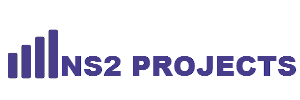- (0)
- 19
Nov Author : NS2 Projects Category : NS2 PROJECT CENTER
Tags : Latest Ns2 Projects, Network simulator2 Projects, Ns2 Projects
standardized way from third-party applications accessing online services, based on the representational state transfer (REST) web architecture. OAuth has been designed to provide an authorization layer, typically on top of a secure transport layer such as HTTPS. The Internet of Things (IoTs) refers to the interconnection of billions of resource-constrained devices, denoted as smart objects, in an Internet-like structure. Smart objects have limited processing/memory capabilities and operate in challenging environments, such as low-power and lossy networks. IP has been foreseen as the standard communication protocol for smart object interoperability. The Internet engineering task force constrained RESTful environments working group has defined the constrained application protocol (CoAP) as a generic web protocol for RESTful-constrained environments, targeting machine-to-machine applications, which maps to HTTP for integration with the existing web.
In this paper, we propose an architecture targeting HTTP/CoAP services to provide an authorization framework, which can be integrated by invoking an external oauth-based authorization service (OAS). The overall architecture is denoted as IoT-OAS. We also present an overview of significant IoT application scenarios. The IoT-OAS architecture is meant to be flexible, highly configurable, and easy to integrate with existing services. Among the advantages achieved by delegating the authorization functionality, IoT scenarios benefit by: 1) lower processing load with respect to solutions, where access control is implemented on the smart object; 2) fine-grained (remote) customization of access policies; and 3) scalability, without the need to operate directly on the device.
